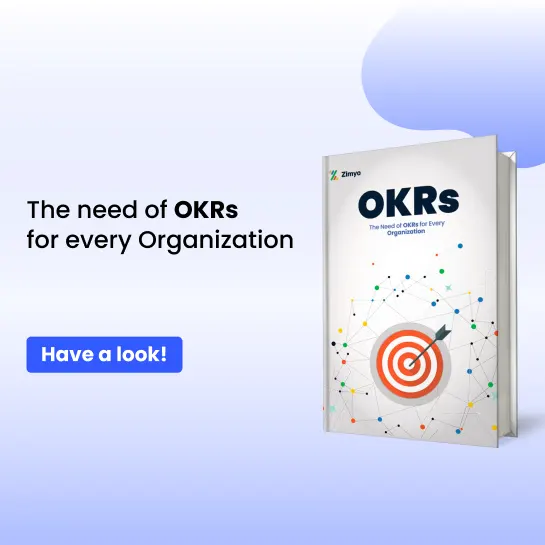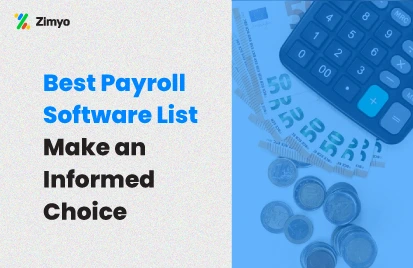Using a standardized salary slip format is helpful in gaining clarity and consistency in payroll management. Stepping into a new role often comes with the familiar request: “Please share your salary slip.” But why is this small document so important? Well, salary slips are not just a formality. Instead, for HR professionals, they are highly important. Because they provide clear data about your employment history. And sometimes it influences your future salary package too.
However, many of us find ourselves without these crucial documents when we need them the most. Have you ever misplaced your salary slip? Perhaps you left it in the desk drawer at your last job? Don’t worry—there are ways to retrieve it. You can always reach out to your previous employer for a copy. Alternatively, your bank’s transaction history might serve as a suitable substitute. Additionally, these days companies provide the soft copy of your salary slip too. So, remember to save them in a secure folder in your mobile or desktop.
Reminder! Always ask for monthly salary slips from your current organization. (If they aren’t doing so.) This habit makes sure that you’re always prepared for risks. Moreover, it also keeps your financial records organized and accessible.
Now, let’s go deeper into the subject at hand: the salary slip format. We’ll explore the components of a salary slip… the importance of understanding them… and why a sound understanding salary slip format is necessary for both employees & HRs.
What is a Salary Slip?
When we talk about salary slips, what exactly do we mean? A salary slip is also called a pay slip. It is an important document that employees receive from their organization every month. This document is part of payroll management. It contains everything from your gross salary to deductions. Ultimately, it is a proof of the net amount that you take home. But have you ever wondered how the salary slip format plays a role in this process?
Each month, as soon as your paycheck arrives, your salary slip is generated. This slip isn’t just a piece of paper. Instead, it’s a financial tool! Because it provides clarity and transparency about your monthly and yearly earnings. You should understand your salary slip format clearly. As, it will tell you exactly where your money is going and what you’re bringing home.
Have you ever wished for an easy way to generate your pay slips? You can instantly create them using our free online salary slip generator. This tool provides financial clarity on the go. Thus, making sure that you always have your salary slip ready-hand whenever you need it.
But why does the salary slip format matter so much? For starters, it plays a vital role when you’re preparing your Income Tax Returns (ITR). By understanding your salary slip, you can determine the exact amount of tax you need to pay. Helpful, isn’t it? You can even figure out the refunds you can claim! In essence… know your salary slip format in India… and get a full control of your overall financial planning.
So, do you keep track of your salary slips regularly? If not, now might be the perfect time to start.
The Salary Slip Format in India
Employee salary slip format in India is generally the same in every organization. The most common salary slip format in India includes the following information:
- Name of the company
- Logo of the company
- Month and Year
- Name of the employee
- Designation and Department of employee
- Date of joining
- Employee’s ID number
- PAN/Aadhaar number of employee
- Employee’s bank name and account number
- Provident Fund account number of employee
- Number of leaves taken by the employee
- Effective workdays of the employee
- UAN (Universal Account Number)
- Earnings and deductions
- Gross and net pay
- Signatures of both employee and employer
Below is a sample salary slip format:
| Company Name | |||
| Company Address | |||
| January 2025 | |||
| Name | UAN | ||
| Employee ID | PF number | ||
| Designation | ESI number | ||
| Department | Bank Name | ||
| DOJ | Bank A/c number | ||
| Total Working Days | Paid Days | ||
| LOP Days | Leaves Taken | ||
| Earnings | Deductions | ||
| Basic Wage | ₹0 | EPF | ₹0 |
| HRA | ₹0 | Professional Tax | ₹0 |
| Conveyance Allowances | ₹0 | TDS | ₹0 |
| Medical Allowances | ₹0 | Loan Recovery | ₹0 |
| Other Allowances | ₹0 | ||
| Total Earnings | ₹0 | Total Deductions | ₹0 |
| Net Salary | ₹0 | ||
| Particulars | Formulas |
| Taxable Income | Gross Salary – Deductions |
| CTC = Employee’s total salary package | Gross Salary + EPF + Gratuity + Others |
| Gross Salary | Basic Salary + HRA + Other Allowances |
| Net Salary | Basic Salary + HRA + Allowances – Income – Tax – EPF – Professional Tax |
Components of a Salary Slip in India
Looking for a quick way to generate your salary slip? You can easily create an employee salary slip by following the salary slip format sample we’ve provided above. Alternatively, why not try our free salary slip generator? It’s designed to simplify the process and give you instant access to your income.
Now, what’s next? The key elements in a salary slip! In the following sections, we’ll throw light on the core components of the salary slip format. With this, you can understand exactly what each section means and how it impacts you.
A) Income
1. Basic Salary
When you look at your salary slip, the first thing you’ll notice is the basic salary. But what exactly does this term mean? The basic salary is the fixed part of your income. It excludes overtime pay, bonuses, allowances, and any other extra payments. Typically, the basic salary makes up 30-50% of your take-home pay. The exact percentage depends on your role and the industry you work in. Have you ever wondered how your designation impacts your basic salary?
2. Gross salary
Next up is the gross salary. So, what is the gross salary? Simply put, it’s your salary before any deductions. It includes the following… bonuses, overtime, holiday pay, House Rent Allowance (HRA). Provident Fund (PF), and professional tax are there too. Ever looked at your salary slip format and noticed all these components adding up? That’s your gross salary.
3. Net salary or take-home salary
Finally, let’s talk about the net salary, often referred to as the take-home salary. What does this mean for you? The net salary is what you actually receive after all deductions. Such as, taxes and provident fund. These are made from your gross salary. In the salary slip format in India, this is the amount you get credited to your bank account each month.
B) Allowances
When you have a look at your salary slip format, have you noticed the section on allowances? These allowances are additional amounts paid to you on top of your basic salary. Hence, they form an important part of your overall employee benefits. But what exactly are these allowances? Let’s break them down:
1. Conveyance Allowance (CA):
This allowance covers travel expenses from home to work. Also, for office-related travel, such as field trips. It helps offset the cost of commuting.
2. House Rent Allowance (HRA):
HRA is typically 40-50% of your basic salary. It is provided to cover rent expenses. Did you know you can claim this component as a tax deduction? It’s an important part of the salary slip format.
3. Dearness Allowance (DA):
This allowance helps mitigate the effects of inflation. It’s fully taxable. Plus, it’s mainly applicable to government employees, public servants, and pensioners.
4. Medical Allowance:
This fixed monthly allowance compensates for health-related expenses. Although it’s fully taxable. Yet it’s provided regardless of whether you submit medical bills.
5. Performance Allowance:
Varying from company to company, this allowance is linked to performance rewards. Such as bonuses and incentives. It’s a way to recognize and reward outstanding performance.
6. Other Allowances:
Companies might also offer special allowances, such as education, outstation, or uniform allowances. Have you come across any unique allowances in your salary slip format?
Understanding these components can give you a clearer picture of your total compensation. Do you feel confident about reading and interpreting your salary slip now?
I was able to implement the platform on my own. It helps in assigning the tasks to other employees, conducting surveys and polls, and much more. The ease of use and self-onboarding is something that I would like to appreciate.
Sonali, Kommunicate
Zimyo simplifies attendance management for our organization. The leave and attendance are so streamlined that we have never faced any difficulties with the system.
Anurag, Eggoz Nutrition
C) Deductions
When you review your salary slip format, you’ll notice several deductions. They do impact your take-home pay. But what are these deductions, and how do they affect your salary? Let’s explore the major deductions you might see in a typical salary slip format in India:
1. Tax Deducted at Source (TDS):
TDS is a part of your salary that’s withheld each month and sent to the Income Tax Department. The amount deducted depends on your income and age bracket. Have you seen this deduction on your salary slip?
2. Employee Provident Fund (EPF):
It is a common deduction. Here, both the employee & the employer contribute 12% of your basic salary and dearness allowance to your EPF account. It’s helpful for your future savings.
3. Professional Tax:
This small monthly deduction goes to the state government and varies by state. Some states, like Arunachal Pradesh and Goa, don’t levy this tax.
4. Life Insurance and Health Insurance:
It is indicated in the salary slip format in India. Which says that amounts for life and health insurance are deducted from your salary. So that you’re covered for unforeseen events and health issues.
So, understanding these deductions helps you know your salary structure. Are these deductions clear now? Always stay well-informed about your earnings and benefits.
Importance of Salary Slip
Understanding your salary slip format is crucial for several reasons. So, why is it so important? Let us know.
1. Helps You Understand Tax Deductions:
Your salary slip provides a clear view of the tax deductions you’ll face and your net income. Knowing these details helps you negotiate better when moving to a new company. Have you used this information to your advantage during job transitions?
2. Gives You an Idea of Your Retirement Savings:
Examine your salary slip format closely. Then you can estimate how much you’ll save for retirement. Reviewing your EPF or PF contributions also aids in planning for the future. Do you check your salary slip to ensure you’re on track for retirement?
3. Background Checks:
As much importance as it holds for an employee, it does for an employer too, as they can be a great assistance when you are hiring a new employee. Salary slips can be used to validate the salary claims made by a prospective employee.
4. To Avail of Loans or Credit Cards:
As you can see in the employee salary slip format in India, your salary slip contains details of your monthly income. It is a major factor in determining your loan repayment potential or ability to meet your debt obligations. Thus, you are asked to submit a salary slip while applying for a credit card, loans, etc.
5. Availing Government Subsidies:
You can also use your salary slip to access certain government services. Such as medical care or subsidized food grains. Understanding the importance of your salary slip format helps you manage your financial life more effectively. So, make the most of your salary slip for all these purposes.
Conclusion: Salary Slip Simplified
By now, you would have built a solid understanding of what salary slips are and why they matter. But why is managing them so crucial?
Manual payroll processing can be quite burdensome. On top of that, issuing employee salary slips manually adds another layer of complexity and time consumption. Have you found yourself overwhelmed by this process?
That’s why many leading companies are turning to payroll software. This technology simplifies payroll processing, reduces errors, and frees up valuable time for more productive tasks. How does your company handle payroll? Could software make your job easier?
Payroll software typically comes with a predefined salary slip format. This feature makes generating and issuing employee salary slips straightforward and efficient. Are you using a system that includes a salary slip format?
Furthermore, employees benefit from this technology too. They can download their salary slip anytime and from anywhere with just a click. Have you experienced the convenience of accessing your salary slip format in India through payroll software?
In summary, opting for a modern payroll system with a user-friendly salary slip format can streamline the entire process. Thus, improving the efficiency of both employers and employees.
Zimyo—The Best Payroll Software in India
Ready to upgrade your payroll process? Say goodbye to the hassles of manual payroll and hello to swift, error-free processing with Zimyo, the best payroll software in India. With Zimyo, you can generate salary slips in just a few clicks. Therefore, ensuring compliance and accuracy every time.
Don’t just take our word for it—our 4.6 average rating on G2, Capterra, and Glassdoor speaks volumes. Experience the convenience and efficiency that over 2,000+ businesses trust. Start your journey toward stress-free payroll today with Zimyo!
I was able to implement the platform on my own. It helps in assigning the tasks to other employees, conducting surveys and polls, and much more. The ease of use and self-onboarding is something that I would like to appreciate.
Sonali, Kommunicate
Zimyo simplifies attendance management for our organization. The leave and attendance are so streamlined that we have never faced any difficulties with the system.
Anurag, Eggoz Nutrition
FAQs (Frequently Asked Questions)
If you have worked for an organization and you were paid by the organization, then you can ask for a salary slip at any time from your HR managers, even after you are no longer a part of the organization.
Yes, in case you don’t have a salary slip you can show your bank statement – Form 16 – or even your appointment letter as proof of your employment.
You can verify your salary slip by using some basic formulas of salary calculations. You can also take the help of an expert if you are having any difficulty in understanding your salary slip.
Also Read: Salaries as per Industry Standards in India









